Home>Gardening & Outdoor>Pool & Spa Care>How To Build A Wood Deck For A Hot Tub
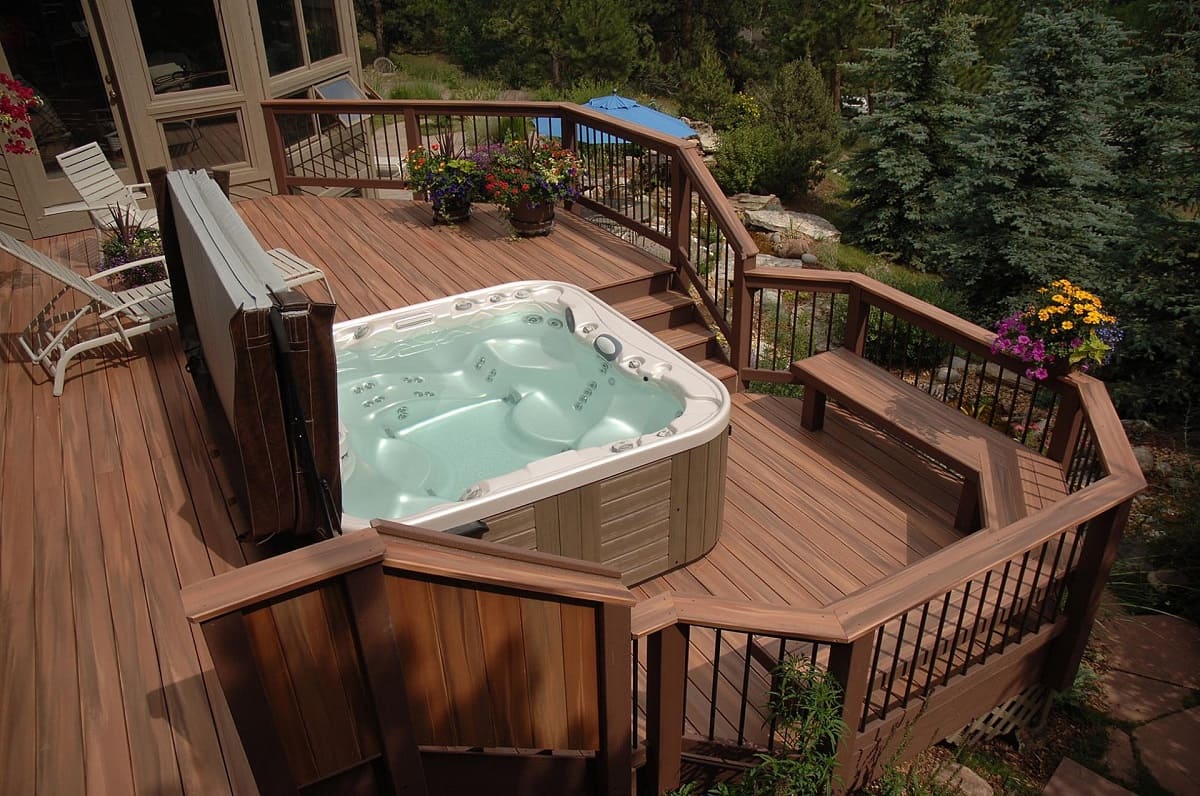

Pool & Spa Care
How To Build A Wood Deck For A Hot Tub
Modified: February 25, 2024
Learn how to build a sturdy wood deck for your hot tub with our expert tips and advice. Create a relaxing and functional space for your pool and spa care needs.
(Many of the links in this article redirect to a specific reviewed product. Your purchase of these products through affiliate links helps to generate commission for Storables.com, at no extra cost. Learn more)
Introduction
Welcome to the world of luxurious relaxation and hydrotherapy! A wood deck can be the perfect complement to your hot tub, creating a serene and inviting space for unwinding and enjoying the therapeutic benefits of soaking in warm, bubbling water. In this guide, we’ll explore the step-by-step process of building a wood deck specifically designed to accommodate a hot tub. Whether you’re a seasoned DIY enthusiast or a first-time builder, this comprehensive resource will provide invaluable insights and practical tips for creating a sturdy and visually appealing deck that enhances the overall hot tub experience.
From initial planning and obtaining permits to selecting the right materials and executing the construction, every aspect of the project is crucial to achieving a successful outcome. By following this guide, you’ll gain a deeper understanding of the intricacies involved in building a wood deck for a hot tub, empowering you to embark on this rewarding endeavor with confidence and enthusiasm.
So, let’s dive into the world of deck construction and hot tub installation, where craftsmanship meets relaxation, and where the aroma of treated lumber mingles with the soothing steam rising from your very own backyard oasis.
Key Takeaways:
- Planning and Design
Before building a wood deck for a hot tub, carefully plan the layout, consider the hot tub’s size and location, and incorporate additional features to create a visually appealing and functional outdoor space. - Safety and Aesthetics
Obtain permits, use high-quality materials and tools, and ensure proper site preparation to build a sturdy and visually appealing wood deck for a hot tub, prioritizing safety and compliance with regulations.
Read more: How To Build Deck For Hot Tub
Planning and Design
Before embarking on the construction of a wood deck for your hot tub, meticulous planning and thoughtful design are essential. Start by envisioning the layout and dimensions of the deck, considering factors such as the hot tub’s size, shape, and weight when filled with water. It’s crucial to ensure that the deck provides ample support for the hot tub while offering convenient access and a visually appealing integration with your outdoor space.
Begin by measuring the dimensions of the hot tub and determining the ideal location for it on your property. Consider factors such as privacy, sunlight exposure, and proximity to the house when selecting the placement of the hot tub within the deck design. Additionally, think about the surrounding landscape and how the deck can be harmoniously incorporated into the outdoor environment, creating a seamless transition from the house to the hot tub area.
When designing the deck, take into account the potential need for additional features, such as built-in seating, privacy screens, or storage compartments. These elements can enhance the functionality and aesthetic appeal of the deck while addressing practical considerations related to the hot tub’s usage and maintenance.
Furthermore, consider the overall aesthetic of the deck, including the choice of wood, stain or paint colors, and any decorative elements that can contribute to the visual appeal of the space. Whether you prefer a rustic, natural look or a more contemporary and polished appearance, the design of the deck should reflect your personal style and complement the existing architecture and landscaping of your property.
By carefully planning and designing the wood deck for your hot tub, you’ll lay the foundation for a project that not only meets your practical needs but also embodies your vision of an inviting and harmonious outdoor retreat.
Obtaining Permits
Before commencing the construction of a wood deck for your hot tub, it’s imperative to ensure compliance with local building codes and regulations. Obtaining the necessary permits is a crucial step in the process, as it not only ensures the safety and structural integrity of the deck but also prevents potential legal issues down the line.
Start by researching the specific building codes and permit requirements in your area. Contact your local building department or municipal office to inquire about the regulations governing deck construction, particularly when it involves supporting the weight of a hot tub. Familiarize yourself with the permit application process, associated fees, and any documentation or plans that may be required for approval.
When applying for permits, you may need to submit detailed plans and specifications for the deck, including information on the materials to be used, the proposed location of the hot tub, and the structural design of the deck to support the weight of the hot tub and its occupants. It’s essential to adhere to the guidelines provided by the building department and address any specific requirements related to hot tub installations, such as electrical safety considerations and barrier regulations.
Engaging a professional architect or structural engineer to review and endorse your deck plans can bolster the credibility of your permit application and provide assurance of the deck’s structural soundness. Additionally, seeking guidance from experienced contractors or builders who are familiar with local building codes can offer valuable insights into navigating the permit process and ensuring full compliance with regulatory standards.
By obtaining the necessary permits before initiating the construction of your hot tub deck, you demonstrate a commitment to upholding safety standards and legal requirements, setting the stage for a smooth and trouble-free building process. Remember that adherence to building codes not only safeguards the well-being of those who will enjoy the deck but also contributes to the long-term durability and value of your outdoor living space.
Materials and Tools
Choosing the right materials and tools is pivotal to the successful construction of a wood deck for your hot tub. From durable lumber and sturdy hardware to essential construction tools, each component plays a crucial role in ensuring the structural integrity and longevity of the deck. Here’s a comprehensive overview of the materials and tools you’ll need for this rewarding project:
Materials
- Pressure-Treated Lumber: Select high-quality, pressure-treated lumber for the structural framework of the deck, ensuring it can withstand exposure to the elements and support the weight of the hot tub.
- Decking Boards: Choose durable, weather-resistant decking boards, such as cedar, redwood, or composite materials, to provide a stable and visually appealing surface for the deck.
- Concrete Footings: Utilize concrete footings to provide stable support for the deck posts, ensuring proper weight distribution and structural stability.
- Hardware and Fasteners: Acquire corrosion-resistant hardware, including galvanized or stainless steel screws, nails, and joist hangers, to secure the components of the deck and withstand outdoor conditions.
- Hot Tub Base Materials: Depending on the specific requirements of your hot tub manufacturer, gather materials for constructing a stable and level base, which may include gravel, concrete blocks, or specialized hot tub pads.
- Finishing Materials: Consider the finishing touches, such as exterior wood stain, sealant, and decorative elements, to enhance the aesthetics and protect the deck from moisture and UV exposure.
Read more: How To Support Deck For Hot Tub
Tools
- Power Saw: A circular saw or miter saw for cutting lumber and decking boards to the required dimensions.
- Level: Ensure accurate and level installations by using a carpenter’s level throughout the construction process.
- Drill/Driver: A power drill/driver with appropriate bits for assembling the deck components and fastening hardware.
- Shovel and Digging Tools: Necessary for excavating and preparing the ground for the deck footings and hot tub base.
- Tape Measure and Marking Tools: Essential for precise measurements, layout marking, and ensuring proper alignment of the deck components.
- Safety Gear: Prioritize safety with protective eyewear, gloves, and hearing protection, especially when using power tools and handling construction materials.
By carefully selecting high-quality materials and equipping yourself with the necessary tools, you’ll set the stage for a smooth and efficient construction process, ensuring that your wood deck for the hot tub is built to last and provide years of enjoyment.
Site Preparation
Effective site preparation is a critical precursor to the successful construction of a wood deck for your hot tub. By meticulously preparing the ground and ensuring a stable foundation, you’ll lay the groundwork for a durable and visually appealing deck that seamlessly integrates with your outdoor space. Here’s a comprehensive guide to site preparation for your hot tub deck:
Clearing and Leveling
Begin by clearing the designated area of any vegetation, debris, or obstacles that may impede the construction process. Use a shovel, rake, or clearing tools to create a clean and level surface, removing rocks, roots, and any uneven terrain that could affect the stability of the deck.
Marking the Layout
Using string lines, stakes, or marking paint, outline the dimensions and layout of the deck, including the specific location where the hot tub will be situated. This step helps visualize the size and shape of the deck while ensuring accurate alignment and adherence to the planned design.
Read more: How To Remove Hot Tub From Deck
Excavation and Footings
If your deck design includes footings, excavate the marked areas to the specified depth, accounting for the frost line and soil conditions in your region. Install concrete footings at strategic points to support the deck posts, ensuring proper weight distribution and structural stability. Verify the alignment and levelness of the footings to establish a solid foundation for the deck.
Hot Tub Base Preparation
Prepare the area designated for the hot tub base, ensuring that it is level and well-compacted to support the weight of the hot tub and its occupants. Depending on the specific requirements of your hot tub manufacturer, consider using gravel, concrete blocks, or specialized hot tub pads to create a stable and level base that meets the manufacturer’s recommendations.
Drainage Considerations
Assess the drainage patterns and water runoff in the vicinity of the deck site, ensuring that proper drainage measures are in place to prevent water accumulation and potential damage to the deck and hot tub. Implement appropriate drainage solutions, such as French drains or grading adjustments, to mitigate water-related issues and safeguard the integrity of the deck structure.
By conscientiously preparing the site for your hot tub deck, you’ll establish a solid and reliable foundation for the construction process, setting the stage for the seamless integration of the deck into your outdoor environment and ensuring its long-term structural resilience and aesthetic appeal.
Building the Deck Frame
The construction of a sturdy and well-structured deck frame forms the backbone of your hot tub deck, providing the essential support and stability for the entire structure. By methodically assembling the deck frame, you’ll create a robust foundation for the decking boards and ensure the structural integrity necessary to accommodate the weight of the hot tub. Here’s a step-by-step guide to building the deck frame:
Read more: How To Build In-Ground Hot Tub
1. Positioning the Ledger Board
Attach a ledger board to the exterior wall of your house, ensuring it is secured at the appropriate height and level to support the deck’s frame. Use lag screws or through-bolts to firmly anchor the ledger board, accounting for the necessary flashing and water-resistant barriers to protect the house’s structure.
2. Installing Support Posts
Erect support posts at designated intervals along the perimeter of the deck, ensuring they are plumb and securely anchored to the concrete footings. Use post anchors or brackets to connect the posts to the footings, providing a solid connection that withstands the weight and lateral forces exerted by the deck and hot tub.
3. Attaching Beams and Joists
Connect beams to the support posts, creating a sturdy framework for the deck. Subsequently, install joists perpendicular to the beams, spacing them according to the design specifications and local building codes. Secure the joists to the beams using joist hangers or appropriate hardware, ensuring uniform support for the decking boards and the hot tub base.
4. Bracing and Cross-Bracing
Implement bracing and cross-bracing as needed to reinforce the deck frame, particularly in areas where diagonal support is required. This step enhances the structural stability of the deck, mitigating sway and ensuring uniform weight distribution, which is crucial for accommodating the hot tub’s substantial load.
5. Verifying Levelness and Alignment
Throughout the construction of the deck frame, use a level and string lines to verify the levelness, alignment, and squareness of the structure. This meticulous attention to detail ensures that the deck frame is precisely positioned and ready to receive the decking boards, setting the stage for a visually appealing and structurally sound finished deck.
By diligently constructing the deck frame according to these guidelines, you’ll establish a solid and dependable foundation for the hot tub deck, laying the groundwork for the next phases of the construction process and ensuring the long-term durability and safety of your outdoor oasis.
Read more: How To Build Hot Tub Surround
Installing Decking Boards
As you progress in the construction of your hot tub deck, the installation of decking boards marks a pivotal phase where the visual appeal and functional surface of the deck begin to take shape. Careful attention to detail and precision during this stage ensures a smooth and inviting deck surface that complements the overall aesthetics of your outdoor space. Here’s a comprehensive guide to installing decking boards for your hot tub deck:
1. Selecting Quality Decking Material
Choose high-quality decking material, such as cedar, redwood, or composite boards, known for their durability and resistance to weathering. Consider the aesthetic appeal, maintenance requirements, and compatibility with the hot tub’s surroundings when making your selection.
2. Preparing the Deck Surface
Prior to installing the decking boards, ensure that the deck surface is clean, dry, and free of debris. Use a power washer or a stiff brush to remove any dirt, sawdust, or imperfections that may affect the adhesion and appearance of the decking material.
3. Layout and Alignment
Plan the layout of the decking boards, considering the orientation, pattern, and alignment that best complements the design of the deck. Ensure that the boards are positioned parallel to the house and aligned with the edges of the deck frame, maintaining uniform spacing between the boards for a professional finish.
Read more: How To Build A Base For A Hot Tub
4. Fastening the Decking Boards
Secure the decking boards to the joists using corrosion-resistant screws or nails, ensuring that each board is firmly attached and flush with the adjacent boards. Utilize appropriate fastening techniques, such as face-screwing or hidden fastener systems, based on the chosen decking material and your aesthetic preferences.
5. End and Edge Finishing
Address the exposed ends and edges of the decking boards by employing techniques such as mitered joints, picture framing, or the installation of fascia boards. This step enhances the visual appeal of the deck, conceals cut ends, and provides a polished appearance that complements the overall design.
6. Sealing and Finishing
Apply a high-quality exterior wood sealant or stain to the decking boards, protecting them from moisture, UV exposure, and the rigors of outdoor use. Choose a finish that accentuates the natural beauty of the wood or complements the desired aesthetic of the deck, ensuring long-lasting protection and visual appeal.
By following these guidelines for installing decking boards, you’ll transform the deck frame into a welcoming and functional surface that enhances the beauty and usability of your hot tub deck, creating an inviting outdoor retreat for relaxation and enjoyment.
Building the Hot Tub Base
Constructing a stable and level base for your hot tub is a crucial step in ensuring the safety, longevity, and optimal performance of the spa. The hot tub base serves as the foundation that supports the weight of the spa, provides a level surface for installation, and contributes to the overall aesthetic and functionality of the hot tub area. Here’s a comprehensive guide to building the hot tub base for your deck:
Read more: How To Build An Outdoor Hot Tub
1. Assessing Manufacturer’s Recommendations
Review the specific guidelines and recommendations provided by the hot tub manufacturer regarding the required base for installation. Consider factors such as weight distribution, ground preparation, and any specific base materials or support systems recommended by the manufacturer.
2. Selecting Suitable Base Materials
Depending on the manufacturer’s specifications and your local building codes, choose appropriate base materials to create a level and load-bearing foundation for the hot tub. Common options include gravel, concrete pads, pre-cast spa pads, or custom-built platforms designed to accommodate the hot tub’s footprint and weight distribution.
3. Site Preparation and Leveling
Prepare the designated area for the hot tub base by clearing the ground, ensuring it is free of vegetation, debris, and any unevenness that could affect the stability of the base. Use a level and compacting tools to create a uniformly level surface, addressing any slope or irregularities that may impact the installation of the hot tub.
4. Installing the Base Support System
If required by the manufacturer or local regulations, install a suitable support system to elevate the hot tub off the ground and provide adequate ventilation and stability. This may involve the use of concrete blocks, adjustable spa piers, or other engineered support structures designed to accommodate the weight and dimensions of the hot tub.
Read more: How To Build A Hot Tub Enclosure
5. Verifying Alignment and Stability
Prior to placing the hot tub on the base, verify the alignment, levelness, and stability of the prepared foundation. Use a level and measuring tools to ensure that the base is precisely positioned and capable of supporting the hot tub without any risk of shifting, settling, or structural compromise.
6. Following Electrical and Plumbing Requirements
Coordinate with licensed professionals to ensure that the electrical and plumbing requirements for the hot tub are integrated into the base construction. This may involve provisions for electrical wiring, drainage, and access to utility connections, adhering to safety standards and local building codes.
By diligently following these guidelines for building the hot tub base, you’ll create a solid and reliable foundation that not only supports the weight of the hot tub but also contributes to the safety, functionality, and aesthetic appeal of your outdoor spa installation, ensuring a seamless and enjoyable hot tub experience for years to come.
Finishing Touches
As the construction of your hot tub deck nears completion, attention to the finishing touches elevates the overall appeal, functionality, and safety of the outdoor space. From aesthetic enhancements to practical considerations, the finishing touches add polish and character to your hot tub deck, creating an inviting and harmonious environment for relaxation and enjoyment. Here’s a comprehensive guide to the essential finishing touches for your hot tub deck:
1. Railing and Safety Features
Install sturdy and visually appealing railing around the perimeter of the deck, providing a safety barrier and enhancing the aesthetics of the space. Consider options such as wood, metal, or composite railings that complement the design of the deck while adhering to safety standards and local building codes.
Read more: How To Build A Homemade Hot Tub
2. Lighting and Ambiance
Incorporate ambient lighting solutions to extend the functionality and allure of the hot tub deck into the evening hours. Utilize low-voltage LED lights, solar-powered fixtures, or integrated deck lighting to create a warm and inviting ambiance that enhances the nighttime experience of using the hot tub.
3. Privacy Screens and Windbreaks
Integrate privacy screens or windbreaks to enhance the comfort and seclusion of the hot tub area, providing a sense of intimacy and shielding the space from external elements. Consider louvered panels, lattice screens, or strategically positioned landscaping to create a private and sheltered retreat around the hot tub.
4. Seating and Storage Solutions
Incorporate built-in seating or storage compartments into the design of the deck, optimizing the functionality and convenience of the space. Consider benches, integrated storage benches, or custom seating arrangements that provide comfort, practicality, and a seamless integration with the overall deck design.
5. Landscaping and Greenery
Enhance the visual appeal and tranquility of the hot tub deck by incorporating landscaping elements and greenery. Integrate potted plants, decorative shrubs, or ornamental trees to soften the edges of the deck, create natural focal points, and establish a harmonious connection with the surrounding outdoor environment.
Read more: How To Build Steps Around Hot Tub
6. Maintenance and Care Considerations
Implement maintenance and care solutions, such as storage for hot tub accessories, cleaning supplies, and protective covers, to streamline the upkeep of the hot tub and the deck. Consider dedicated storage areas, hooks, or compartments that facilitate the organization and accessibility of essential maintenance items.
By attending to these essential finishing touches, you’ll elevate the hot tub deck into a captivating and functional outdoor retreat, where every detail contributes to the comfort, safety, and aesthetic allure of the space. With meticulous attention to the finishing touches, your hot tub deck becomes a seamless extension of your lifestyle, offering a serene and inviting haven for relaxation and rejuvenation.
Conclusion
Congratulations on successfully completing the construction of your wood deck for the hot tub! By embarking on this rewarding endeavor, you’ve not only created a structurally sound and visually appealing outdoor space but also crafted a sanctuary for relaxation, rejuvenation, and leisure. As you reflect on the journey from planning and design to the meticulous execution of each construction phase, it’s evident that your dedication and attention to detail have culminated in the realization of a captivating and functional hot tub deck.
As you immerse yourself in the soothing waters of the hot tub, surrounded by the natural beauty and craftsmanship of your deck, take pride in the seamless integration of form and function that defines this outdoor oasis. The careful selection of materials, the precision of construction, and the thoughtful incorporation of finishing touches have collectively contributed to the creation of a space that transcends utility, offering a haven for relaxation, social gatherings, and cherished moments with loved ones.
Furthermore, the adherence to building codes, permit regulations, and safety standards underscores your commitment to creating a space that not only delights the senses but also prioritizes the well-being and security of those who will enjoy it. Your conscientious approach to the construction process has established a foundation for enduring enjoyment, where the hot tub deck serves as a testament to your craftsmanship and dedication to creating an outdoor retreat that enriches your lifestyle.
As you bask in the tranquility and comfort of your hot tub deck, may it serve as a reminder of the transformative power of craftsmanship and the joy of creating a space that resonates with your vision and personal style. Whether it’s a peaceful solo soak, a lively gathering with friends, or a quiet moment of reflection, your hot tub deck stands as a testament to the art of blending functionality with beauty, creating an environment that beckons you to unwind, recharge, and savor life’s simple pleasures.
Embrace the serenity of your hot tub deck, relish the warmth of the sun, and revel in the gentle sway of the breeze as you immerse yourself in the tranquil haven you’ve brought to life. This outdoor retreat, crafted with passion and purpose, is a testament to your ingenuity and a space where cherished memories are waiting to unfold.
Frequently Asked Questions about How To Build A Wood Deck For A Hot Tub
Was this page helpful?
At Storables.com, we guarantee accurate and reliable information. Our content, validated by Expert Board Contributors, is crafted following stringent Editorial Policies. We're committed to providing you with well-researched, expert-backed insights for all your informational needs.
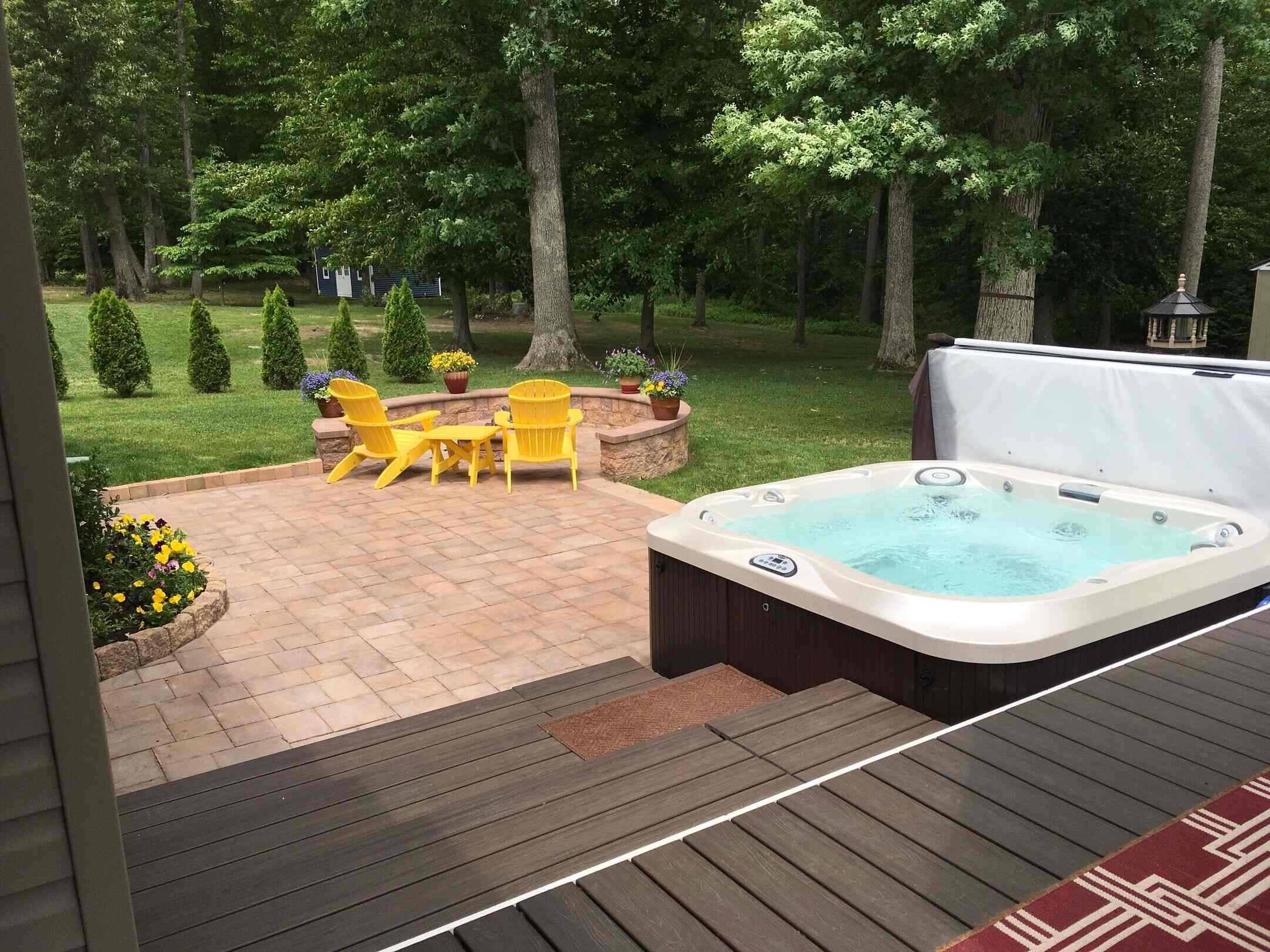
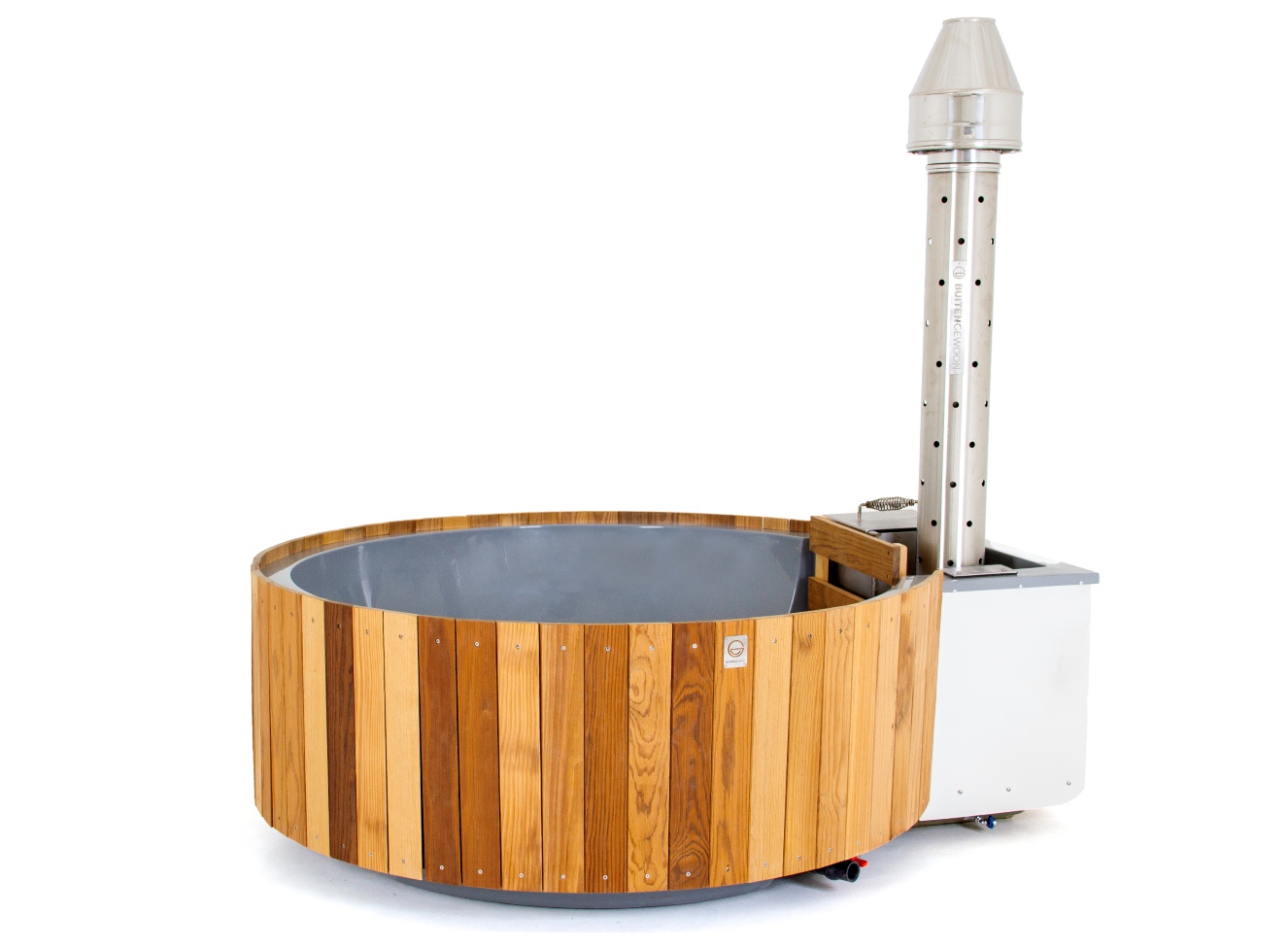
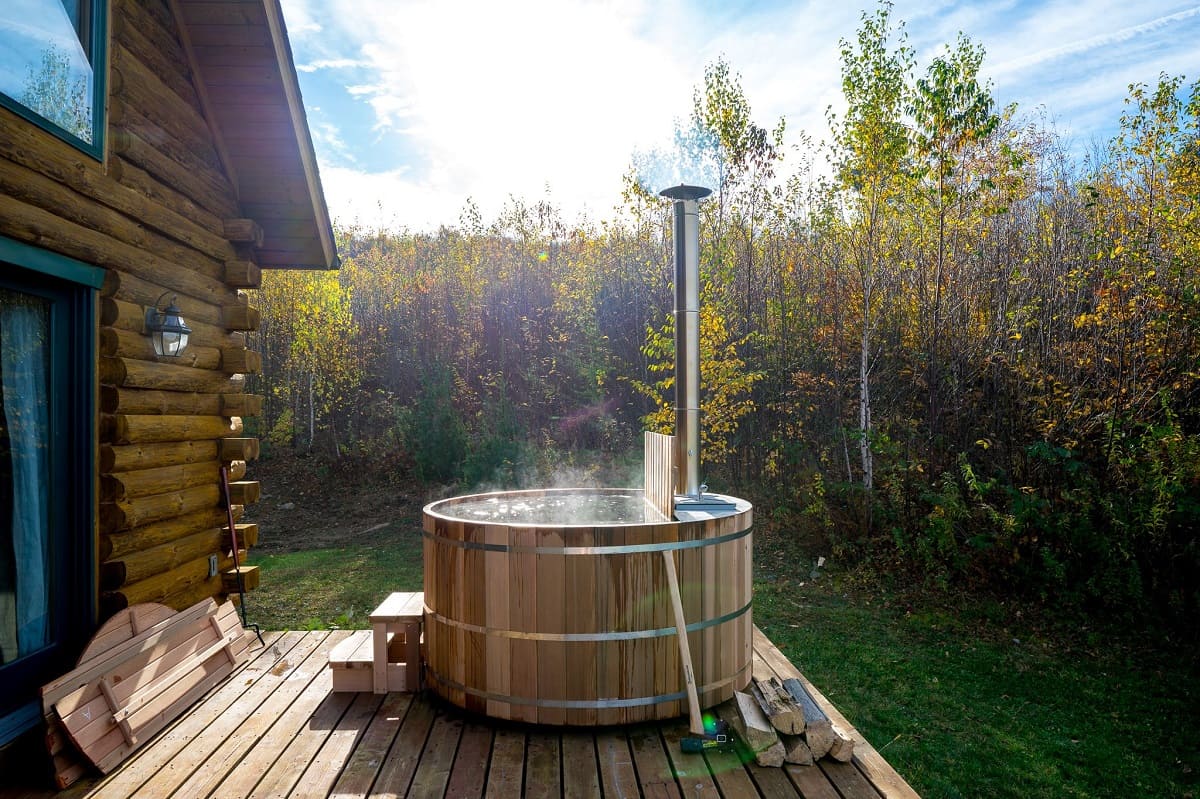
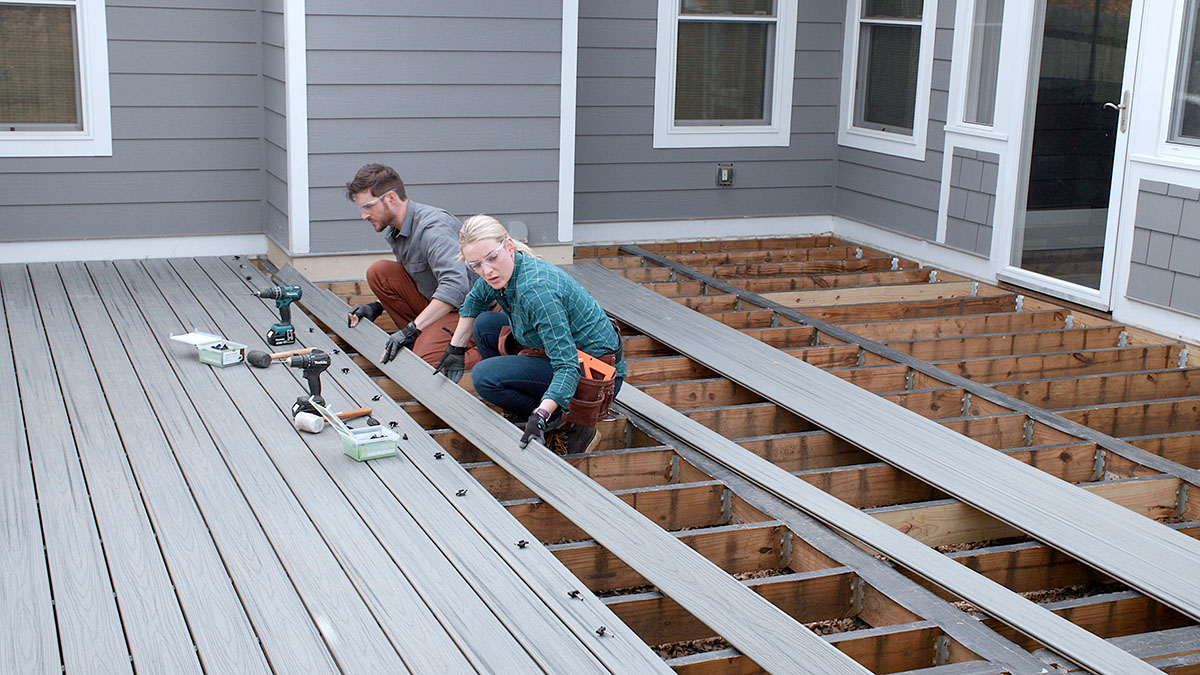
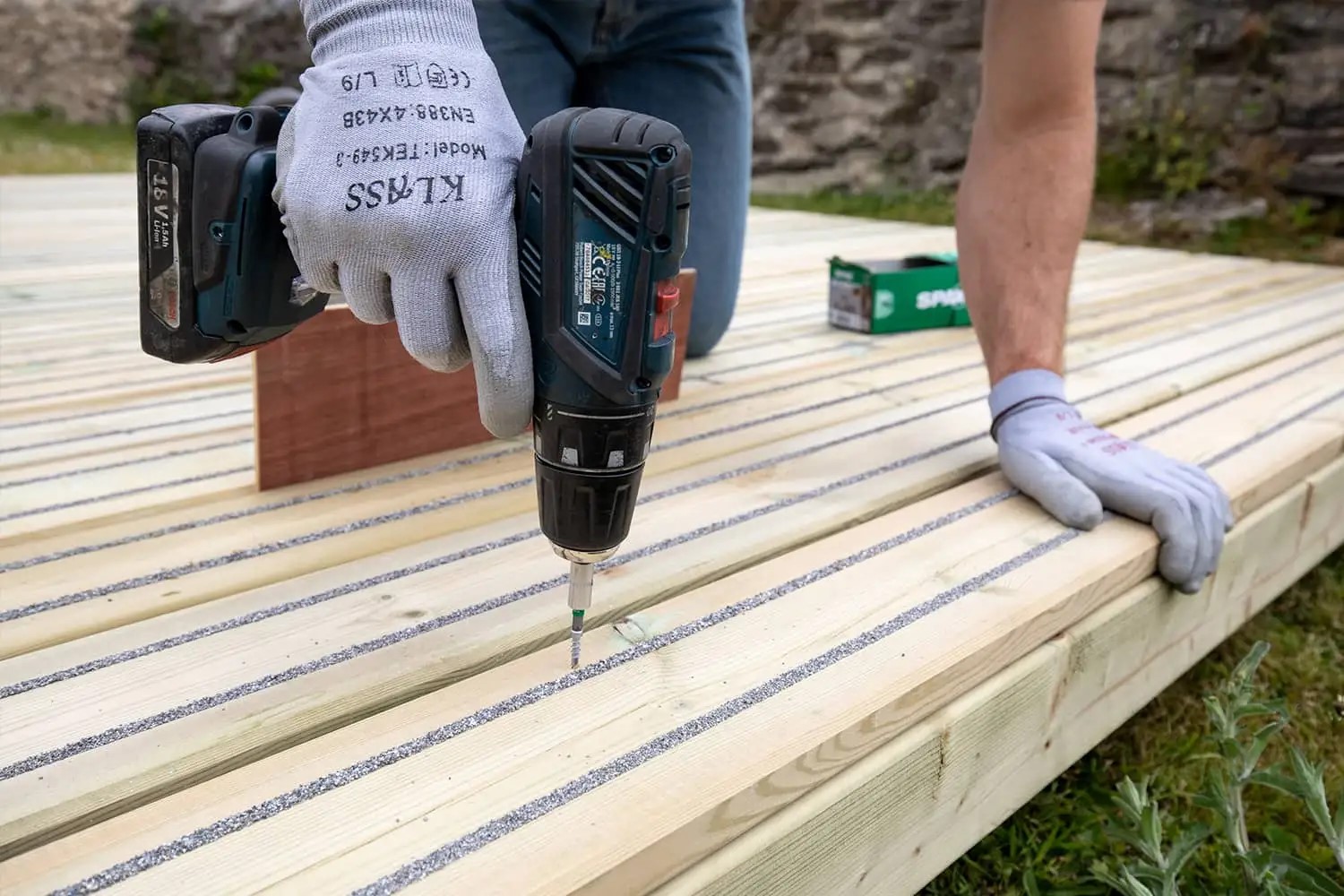
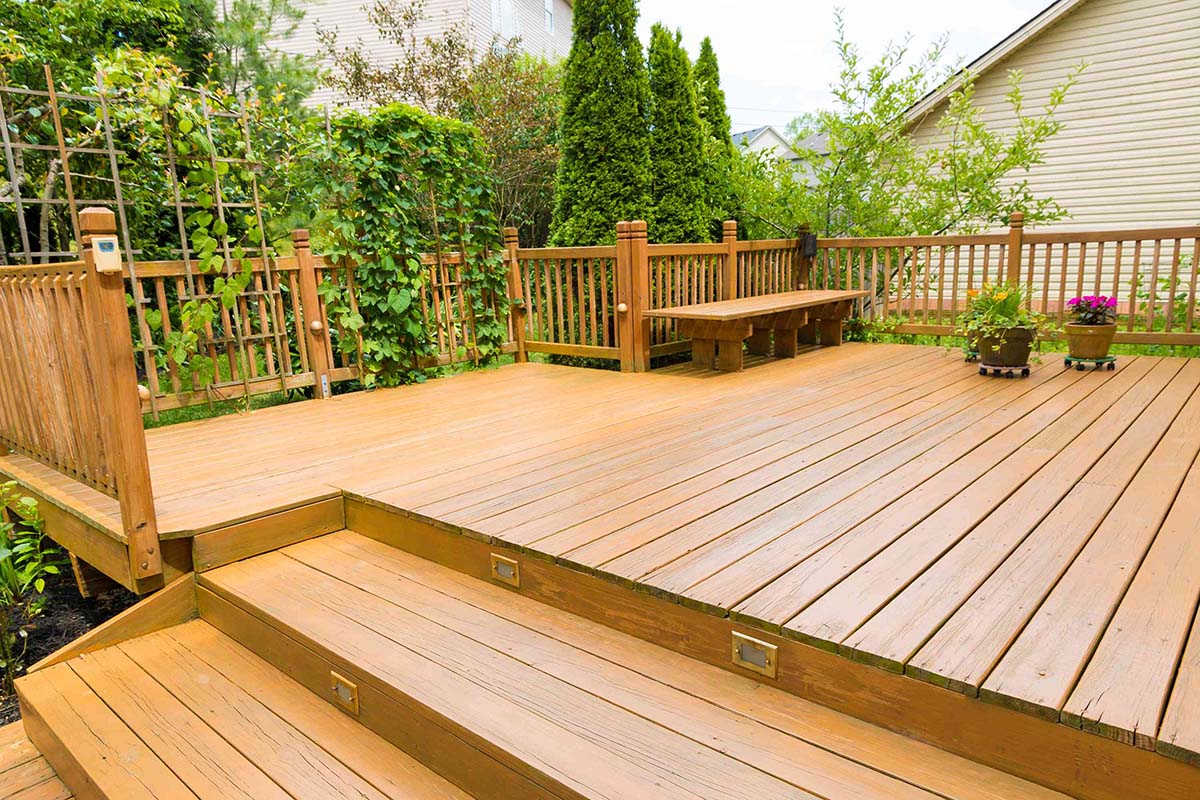

0 thoughts on “How To Build A Wood Deck For A Hot Tub”